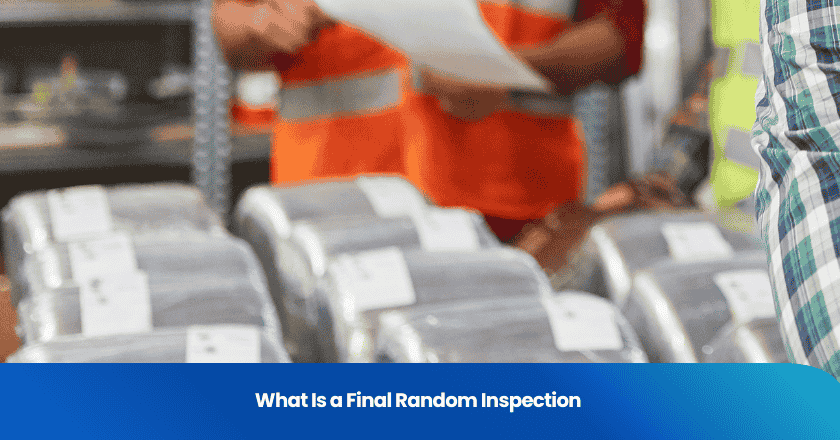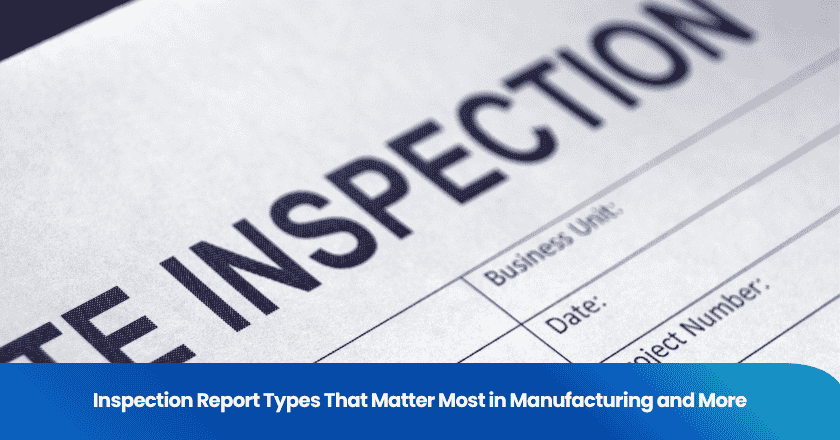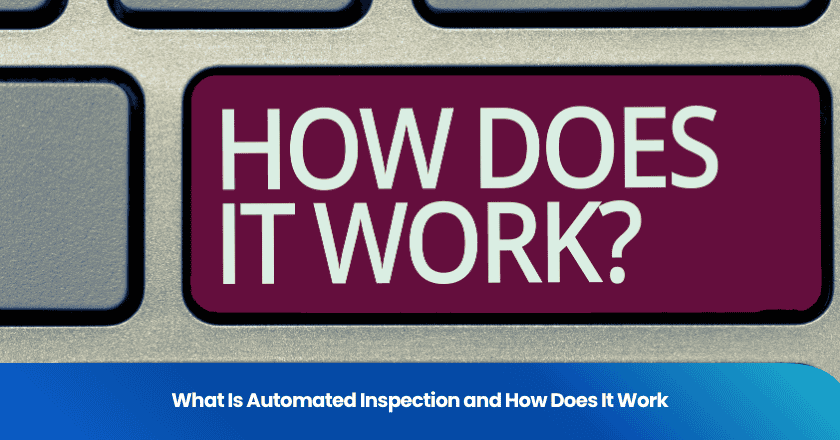
You need to understand that a final random inspection acts as your last line of defense before products leave the factory. This inspection checks if goods meet your design specifications and quality standards. By catching issues early, you prevent substandard products from reaching your customers. This step in quality control supports your brand’s image and increases customer satisfaction. Many companies rely on these inspections to strengthen their market position and avoid costly returns.
Final Random Inspection Basics
What It Means
You use a final random inspection as a critical checkpoint before your products leave the factory. This process, sometimes called a pre-shipment inspection, takes place after production finishes and when at least 80% of goods are packed. The main goal is to confirm that your products meet your specifications and quality standards before shipment. You select samples randomly from the finished goods, which gives you a reliable snapshot of the entire batch without checking every single item.
Final random inspection differs from other types of quality control checks.
You can see the main differences in the table below:
| Criteria | Final Random Inspection (FRI) | Other Inspections |
|---|---|---|
| Timing | Conducted after 100% of production is completed | Conducted at various stages of production |
| Flexibility | Limited rework options | More flexibility to address issues |
| Risk Reduction | Identifies issues post-production | Prevents issues from spreading during production |
You rely on this inspection to ensure that your products are ready for the market. The process uses internationally recognized standards, such as Acceptable Quality Limit (AQL), to determine how many samples to check and what level of defects is acceptable. This method gives you confidence that your shipment meets both your requirements and industry compliance standards.
Tip: Even if you trust your supplier, you should not skip the final random inspection. Reliable suppliers can still face unexpected production issues.
Why It Matters
You protect your business and your customers when you use a final random inspection. This step helps you catch defects, ensure compliance, and maintain high quality before your products reach the market. Many new importers believe that random inspections always miss defects or that they are unnecessary for trusted suppliers. In reality, when you use AQL standards, random sampling provides statistically reliable results. Even the best suppliers can have occasional issues, so periodic checks remain valuable.
You also need to understand how the inspection process handles different types of defects. The table below outlines the actions you should take based on the severity of the defect:
| Defect Type | Description | Action Taken |
|---|---|---|
| Critical | Defects that could result in hazardous conditions or violate regulations. | Immediate rejection of the entire shipment; consult with the client for next steps. |
| Major | Functional defects that reduce usability or visual defects affecting value. | Lot assessed against AQL standards; may be rejected or advised to rework products. |
| Minor | Small cosmetic imperfections or minor deviations. | Decision based on client’s requirements; may accept at a discount or request minor rework. |
You improve your brand reputation and reduce costly returns by using a final random inspection. You also ensure that your products meet both your quality and compliance requirements. This step gives you peace of mind and helps you deliver consistent value to your customers.
Common misconceptions about final random inspection include:
- Random inspections always miss defects. In fact, when you use proper sampling methods, you get reliable results.
- Random inspections are unnecessary for trusted suppliers. Even reliable partners can have occasional issues, so regular checks remain important.
By understanding what a final random inspection is and why it matters, you take control of your product quality and compliance. You make sure your business stands out for reliability and customer satisfaction.
Inspection Process
When to Inspect
You should schedule a final random inspection, also known as a pre-shipment inspection, when production is complete and at least 80% of your goods are packed. This timing ensures that inspectors can evaluate finished products in their actual packaging, which closely reflects what your customers will receive. By inspecting at this stage, you confirm both the quality and the readiness of your shipment before it leaves the factory.
You must also ensure that the entire production run is finished before the inspection begins.
By following these guidelines, you maximize the effectiveness of your inspection and reduce the risk of missing late-stage defects.
How It Works
You rely on a systematic process to carry out a final random inspection. This process uses random samples from your finished goods, which provides a statistically valid overview of the entire batch. Unlike 100% inspection, where every item is checked, random sampling saves time and resources while still delivering reliable results.
The table below compares the random sampling method with 100% inspection:
| Criteria | AQL (Random Sampling) | 100% Inspection |
|---|---|---|
| Cost | Generally lower | Higher due to time and labor |
| Time Efficiency | Faster inspection process | Slower, as every item is checked |
| Defect Detection | May miss low-frequency defects | Catches every defect |
| Best For | High-volume production | Safety-critical applications |
| Customer Satisfaction | May vary when accepting defects | Higher due to total assurance |
You use Acceptable Quality Limit (AQL) standards to determine how many random samples to select and what level of defects is acceptable. This approach balances efficiency with accuracy, making it ideal for high-volume shipments where regulatory compliance and quality are critical.
The inspection process follows a series of well-defined steps. Major inspection agencies recommend the following sequence:
1. Quantity Verification: You confirm that the total quantity produced and packed matches your purchase order.
2. Random Sampling: You select random samples based on AQL standards to ensure statistical accuracy.
3. Visual Check: Inspectors look for cosmetic defects, damage, or poor workmanship.
4. Functional Testing: You test products for basic functionality and performance.
5. Measurement & Specs: Inspectors measure products against your design or sample specifications.
6. Packaging Inspection: You verify labeling, barcodes, packaging materials, and shipping marks for regulatory compliance.
7. On-site Tests: Depending on your product category, you may conduct drop tests, rub tests, or seam strength tests.
8. Report & Verdict: You receive a detailed report with images and a pass/fail result, usually within 24 hours.
Note: You should always ensure that your inspection process covers both quality and regulatory requirements. This approach helps you maintain compliance with standards and avoid regulatory issues in your target markets.
By following these steps, you strengthen your quality control system and ensure that your products meet both your expectations and regulatory demands. You also reduce the risk of costly returns and protect your reputation in the market. Testing and inspection at this stage play a vital role in your supply chain, helping you deliver consistent value to your customers.
Benefits
Quality Assurance
You rely on final random inspection to strengthen your quality control system. This inspection helps you avoid defective shipments and catch non-compliance before customs clearance. You verify product consistency and label accuracy, which supports your quality assurance goals. When you use this process, you reduce return rates and complaints. You also boost supplier accountability and ensure confidence in releasing final payments.
- Avoid defective shipments
- Catch non-compliance before customs clearance
- Verify product consistency and label accuracy
- Reduce return rates and complaints
- Boost supplier accountability
- Ensure confidence in final payment release
Companies that invest in strong quality inspection programs see a 20% increase in customer satisfaction. You can expect a 20% decrease in defect rates when you implement robust quality control measures. These results show that final random inspection plays a key role in maintaining safety and quality standards.
Risk Reduction
You face many risks in international trade, from regulatory penalties to product liability. Final random inspection helps you manage these risks by ensuring compliance and consistent quality.
You lower your exposure to legal issues and protect your brand by making inspection a regular part of your quality control strategy.
Supply Chain Impact
You improve your supply chain efficiency when you use final random inspection. This inspection prevents defects that can lead to costly recalls. If you identify defects only at the end, you may face increased costs and production delays. By implementing a robust inspection system, you reduce defects and minimize the risk of recalls. Over time, you see better customer satisfaction, reduced costs, and an enhanced brand reputation.
You create a more reliable supply chain and support long-term business growth by making quality control a priority.
If Inspection Fails
What Happens Next
You face several important decisions when a shipment does not pass final random inspection. The next steps depend on the severity of the defects and your business priorities. You can follow a structured approach to resolve the situation:
1. Request the factory to rework defective goods and schedule a re-inspection to confirm improvements.
2. Approve partial shipments if only a portion of the goods meets your quality standards.
3. Accept minor defects in writing if they do not affect compliance or customer satisfaction.
4. Escalate disputes to senior management or involve a third-party inspection firm if the factory disagrees with the findings.
5. Maintain a professional dialogue to resolve issues and protect your supplier relationships.
Tip: You should document every decision and agreement to avoid misunderstandings and ensure accountability.
Business Impact
A failed inspection can affect your business in several ways. You may experience delays, financial losses, and damage to your reputation. The table below outlines the main consequences you might encounter:
| Consequence | Description |
|---|---|
| Customer Complaint | Defects found after shipment lead to complaints, claims, or returns from customers. |
| Shipment Rejection or Hold | Defects found during inspection may result in shipment rejection, causing delays and loss of trust. |
| Financial Loss | The factory may incur costs for reworking or replacing goods, and you may seek compensation. |
| Reputation Damage | Misjudgment can harm both factory and buyer reputations, leading to reduced future orders. |
| Logistics & Time Issues | Problems identified post-shipment may require costly re-shipments, affecting future timelines. |
| Internal Conflict | Disputes over responsibility can damage professional relationships and trust among parties. |
You also need to consider the financial losses that often result from failed inspection. These losses can include product returns, urgent air shipments, missed sales windows, penalties from platforms or retailers, and internal disruption. You protect your business by responding quickly and professionally to failed inspection results. You maintain quality and compliance, minimize financial risks, and preserve your reputation in the market.
Other Inspection Types
Pre-Production vs. In-Process
You can strengthen your quality control by understanding the differences between pre-production and in-process inspections. Each type targets a specific stage in the manufacturing cycle and focuses on unique risk areas. The table below highlights the timing and focus areas for each inspection type:
| Inspection Type | Timing | Focus Areas |
|---|---|---|
| Pre-Production Inspection (PPI) | Before mass production | Raw materials, components, initial setup, factory understanding of specifications |
| During Production Inspection (DUPRO) | 20-80% production complete | Workmanship, quality of partially completed products, adherence to specifications |
| Pre-Shipment Inspection (PSI) | After production, before shipment | Final check for defects, functionality testing, quantity verification, packaging compliance |
Pre-production inspection helps you verify that materials and components meet your standards before manufacturing begins. In-process inspection allows you to catch issues early, checking the quality of products as they move through the production line. You can use both to prevent problems from escalating and to ensure your products stay on track for compliance.
When to Use Each
You should select the right inspection type based on your production stage and quality goals. The objectives for each inspection differ, as shown below:
| Inspection Type | Objectives |
|---|---|
| Pre-Production Inspection (PPI) | Ensure readiness of materials and compliance with standards before manufacturing begins. |
| During Production Inspection (DPI) | Identify and rectify quality issues during the manufacturing process to prevent escalation. |
| Final Random Inspection (PSI) | Verify that finished products meet quality standards and buyer specifications before shipment. |
For example, in the automotive industry, you use pre-production inspection to check material properties and dimensions. In electronics, in-process inspection focuses on soldering quality and component placement. Pharmaceutical companies rely on in-process checks for batch weights and contamination testing. These targeted inspections help you maintain high standards and avoid costly mistakes.
Tip: You can improve efficiency and reduce risk by combining different inspection types throughout your supply chain.
By choosing the right inspection at the right time, you ensure product quality, meet compliance requirements, and protect your business reputation.
You strengthen your business by making final random inspection a core part of your quality control strategy. This inspection acts as your last line of defense, helping you identify defects before products reach customers and maintain high standards. You protect your brand reputation and ensure compliance, which supports long-term success.
- You prevent costly returns and complaints.
- You build trust between supplier and buyer.
- You save time and protect your reputation.
You should consider implementing final random inspection to improve your supply chain and deliver reliable products. Start by reviewing your current inspection process and set clear standards for quality.
FAQ
What is the main purpose of a final random inspection?
You use a final random inspection to confirm that finished goods meet your quality standards before shipment. This step helps you catch defects, verify compliance, and protect your reputation.
How does random sampling work during inspection?
You select a set number of products at random from the finished batch. Inspectors check these samples for defects using AQL standards. This method gives you a reliable overview without checking every item.
Can you skip a final random inspection if you trust your supplier?
You should not skip this step, even with trusted suppliers. Production issues can happen unexpectedly. Regular inspections help you maintain consistent quality and avoid costly mistakes.
What happens if your shipment fails the inspection?
You can ask the factory to rework the goods, accept only the compliant portion, or negotiate a solution. You should always document your decisions to protect your interests.
Is a final random inspection required by law?
Most countries do not require it by law. However, many buyers and importers make it a standard practice to ensure product quality and compliance with regulations.
Grow your business with TradeAider Service
Click the button below to directly enter the TradeAider Service System. The simple steps from booking and payment to receiving reports are easy to operate.


